Pallotte Cacio e Ova from Abruzzo - Cheese and Egg Balls Stewed in Tomato Sauce
A recipe from Cucina Povera and an interview with Giulia Scappaticcio, a cooking class teacher and a B&B owner in Abruzzo
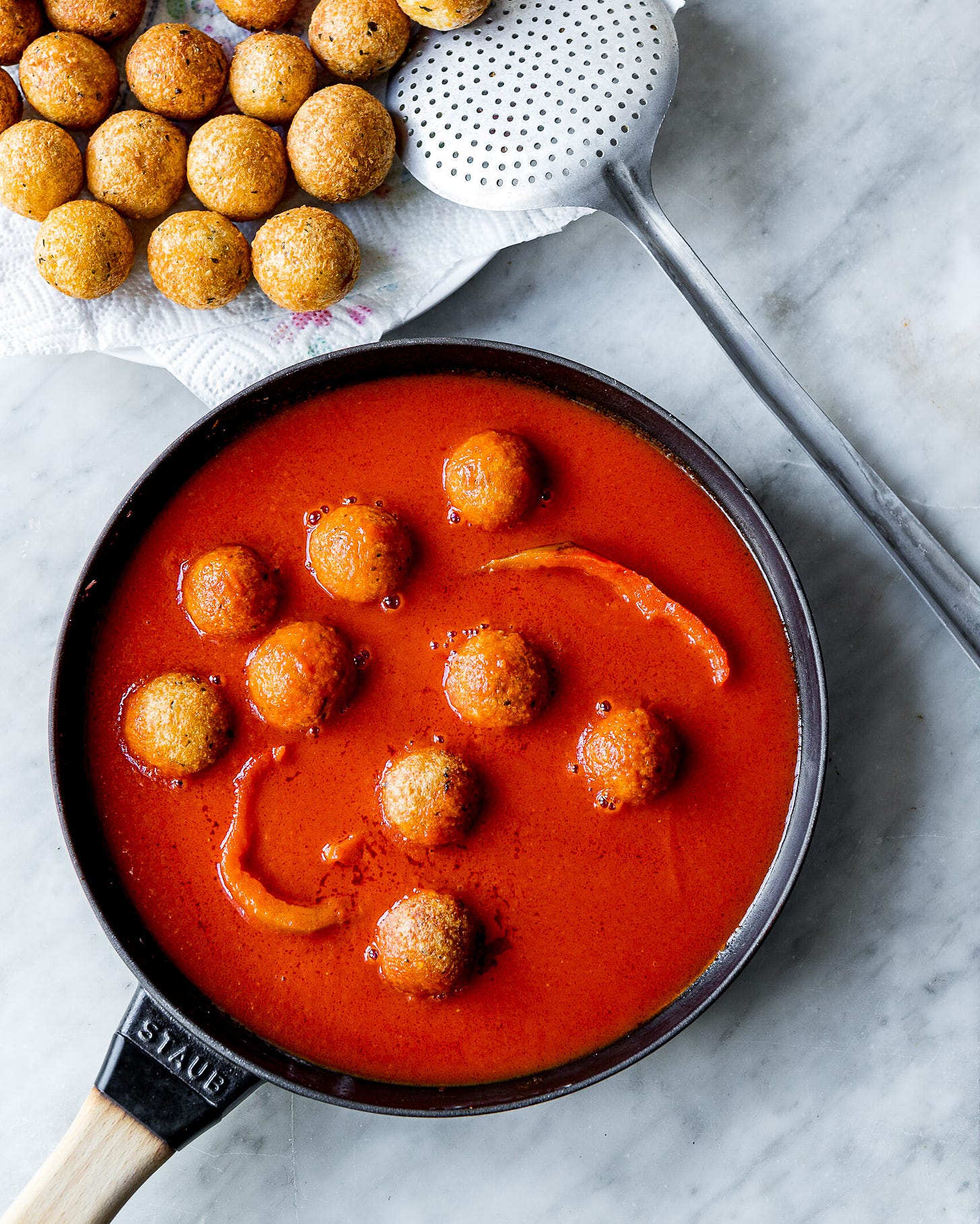
This newsletter is a reader-supported publication. We’re trying to keep things as free as possible, but if you enjoy what I write and want access to exclusive weekly recipes, and if you are at a point in your life to support our newsletter, please consider becoming a paid subscriber. Thank you!
When we started working on the Cucina Povera index, we had planned many short trips and research holidays all over Italy, thinking that we could take classes, enjoy dinners with friends in local trattorias, sample delicious fried treats in busy street food stands, and live and breath the different regional cuisines. But life got in the way.
How can you learn a new regional recipe when you’re in lockdown with a 6-month-old baby girl? You take an online cooking class with your friend and her mother-in-law and you end up laughing so much and learning three outstanding recipes. I spent an afternoon with Giulia and Francesca while Livia was napping with my mum. You could sense their passion and love for the traditional cuisine of Abruzzo: straightforward recipes made with simple ingredients that had a reason to be there. No fancy equipment but a wooden spoon, a pan, and the tactile and visual memory to understand when the bread has been soaked enough, or when the oil is hot enough to plunge the cheese and egg balls and see them dance.
During our online class, I learnt to make three recipes from Abruzzo that ended up in Cucina Povera: pallotte cacio e ova - cheese and egg balls stewed in tomato sauce (p. 144), agnello cacio e ova - stewed lamb with eggs and cheese (p. 80) and maiale ciffe e ciaffe - pork braised in white wine (p. 77).
Read more about Cucina Povera here, and order Cucina Povera here.
If you have already bought it, THANK YOU! If you have bought it online (read Amazon) consider leaving a review so that other people will know about the book.
So, for our second newsletter dedicated to Abruzzo, I’m sharing a quick interview with my friend and colleague Giulia Scappaticcio about her love for her adoptive region, her cooking classes and her agriturismo, along with the recipe for pallotte cacio e ova from Cucina Povera.
Did you miss the first one? Here you can find the Pantry Q&A with Domenica Marchetti, and here is her recipe for Spaghetti alla Chitarra (paywalled).
I hope you are enjoying this Abruzzo focus. Maybe in the next months, we could delve into the cuisine and culture of other Italian regions. Any request?
Ciao Giulia, thank you so much for taking the time to answer my questions in between cooking classes. Can you briefly introduce yourself to our readers?
My name is Giulia Scappaticcio, I am 47 years old and I live in Abruzzo, central Italy, together with my husband Gianluca and our 3 kids, aged 14 to 19.
Where are you located with your B&B?
Our rustic farmhouse with views to the countryside and mountains is set in organic olives and vine fields. We love hosting people from all over the world to make people enjoy the Abruzzo country living. The Country House is a short drive to the wild Majella National Park and Gran Sasso National Park, the Adriatic Sea and the beautiful Trabocchi Coast, hilltop villages and old churches.
We rent three rooms in the same country house we live in. We live here all year long, but we host travellers from April to October when the countryside is at its best.
Being a very small family business we love to dedicate winter time to our kids and to ourselves to be more welcoming for the new season.
We make breakfast for our guests by buying from local farmers especially old grain flours and pecorino or cow milk cheese and using our organic olive oil and veggies. We love local, seasonal, fresh and organic products and we are very proud of our foodie experience at our house.
We also provide very nice hands-on Cooking Classes in English and Italian.
What brought you to Abruzzo and what made you fall in love with Abruzzo’s cuisine?
I am not from Abruzzo. I come from southern Lazio and grew up in the Castelli Romani area and have been working for years in a flying company after my degree in foreign languages.
I only moved here less than 20 years ago when I married my husband Gianluca. He inherited the old great-parents’ house and we decided to move to Abruzzo to renovate the property and enjoy the slow country living.
Being too big for us, we decided to open our house to travellers from all over the world in love with this amazing region off the beaten path. We are so proud of sharing our beautiful house and knowledge of the area with our guests.
I am in love with everything from Abruzzo, especially artisanal food, old traditions, stories and recipes, old authentic flavours and amazing products…
Now I really feel I am an abruzzese and I am very proud of it.
Can you tell us about the typical menu of your cooking classes?
Our cooking classes are focused on traditional abruzzese recipes from cucina rurale: pasta all chitarra, ravioli filled with ricotta, dolci such as Ferratelle or biscotti al vino o alle mandorle and cheese and eggs traditional goodies fiadoni and pallotte cac’e ove.
Most of our foreign guests have Abruzzo origins and love finding the memories of Nonna’s kitchen when cooking with us. All of our guests love discovering and tasting the amazing artisanal food from Abruzzo.
A quick, one-day itinerary for your guests at Casale Centurione? Where do you suggest they go?
We are very well located in the central countryside of Abruzzo, close to the Maiella National Park now Geopark UNESCO World Heritage, to the Gran Sasso mountains called Little Tibet and a short drive to the beautiful Trabocchi coast.
We help our guests to find the best itineraries and activities for them: trekking in the mountains, biking along the rivers or the Adriatic coast, visiting historical and anthropological museums but the most requested activities are farm visits and wine and food tastings. Artisanal products such as ceramics, linen, wool, and wooden tools together with bottles of Montepulciano and Cerasuolo d’Abruzzo and pecorino cheese are the best products our guests love to buy to bring back home. There is so much to explore, taste and enjoy.
Thank you so much, Giulia, for your time and for sharing your love for Abruzzo with us!
You can find Giulia online:
on her Agriturismo website: Casale Centurione Abruzzo
on her IG page: @casalecenturione_abruzzo
And now, the recipe for pallotte cacio e ova from Cucina Povera, which is the same one that Giulia taught me during our online cooking class.
RECIPE. Pallotte cacio e ova - Cheese and Egg Balls Stewed in Tomato Sauce
Excerpted from Cucina Povera by Giulia Scarpaleggia (Artisan Books). Copyright © 2023.
Pallotte are soft, spongy balls made with day-old bread and grated leftover cheese, simmered in a very smooth tomato sauce. Serve them in small bowls, with plenty of crusty bread to mop up the sauce.
NOTES: The pallotte should be simmered in the tomato sauce just before serving, or they will become soggy. But you can fry the pallotte in advance and store them in the fridge, then cook them in the tomato sauce when ready to serve.
Use any leftover sauce to dress a bowl of spaghetti: the pallotte infuse the sauce with a cheesy flavor, making it a great choice for a quick meal.
SERVES 4 TO 6 AS A STARTER
For the tomato sauce
¼ cup/60 ml extra virgin olive oil
2 cloves garlic, crushed and peeled
½ celery stalk
¼ red bell pepper, seeded
3 cups/720 ml tomato puree (passata)
2 cups/480 ml water
Fine sea salt
For the pallotte
7 ounces/200 g day-old bread, crusts removed
7 ounces/200 g Parmigiano- Reggiano, grated
3½ ounces/100 g Pecorino Romano, grated
4 large/200 g eggs, lightly beaten
½ clove garlic, minced
2 tablespoons minced fresh flat-leaf parsley
4 cups/1 L vegetable or other neutral oil for deep-frying
Crusty bread for serving
Prepare the sauce: In a large frying pan, heat the olive oil over medium-low heat. Add the garlic, celery, and red pepper (don’t chop them, leave them whole) and cook, stirring, until the garlic is golden and fragrant, about 2 minutes. Pour in the tomato puree and water and bring to a simmer, then reduce the heat to low and simmer for about 20 minutes, until the sauce is glossy but still quite liquid. Taste and season with salt; set aside.
Make the pallotte: In a medium bowl, soak the bread in cold water to cover for 5 minutes. Check the bread; it should have become soft again. If it’s still a bit hard, let it soak for a few minutes longer.
Remove the bread from the water and squeeze it to remove the water. Crumble it into a large bowl. Add the grated Parmigiano-Reggiano and pecorino, then add the eggs, garlic, and parsley. Mix the ingredients together, squeezing them with your hands, until a soft, moist, slightly crumbly dough forms, then continue to mix until it no longer sticks to your hands.
To form the pallotte, scoop up 1⁄2 tablespoon of the dough and, with slightly wet hands, roll into a ball. Transfer to a rimmed baking sheet and repeat with the remaining dough; you should end up with about 3 dozen pallotte.
Pour the frying oil into a large high-sided pot set over medium-high heat. Set a wire rack set over a rimmed baking sheet and place nearby.
When the oil registers 350°F/175°C on a deep-frying thermometer, add
the pallotte to the pot, cooking them in batches; if you crowd the oil, the temperature will drop and the pallotte will absorb too much oil. As you add them, the pallotte should roll over on themselves and dance in the oil; fry until golden brown, about 5 minutes, then transfer to the wire rack. Fry the remaining pallotte in batches, allowing the oil to return to temperature between batches.
Remove the garlic, celery, and pepper from the tomato sauce and heat it until hot. Add the pallotte to the sauce and simmer for 5 minutes. Serve immediately.




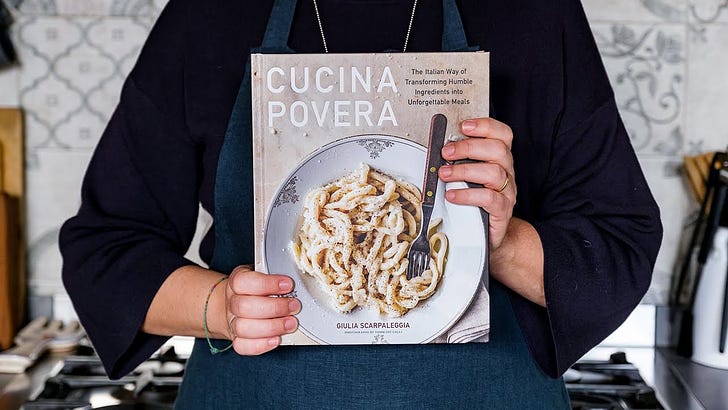

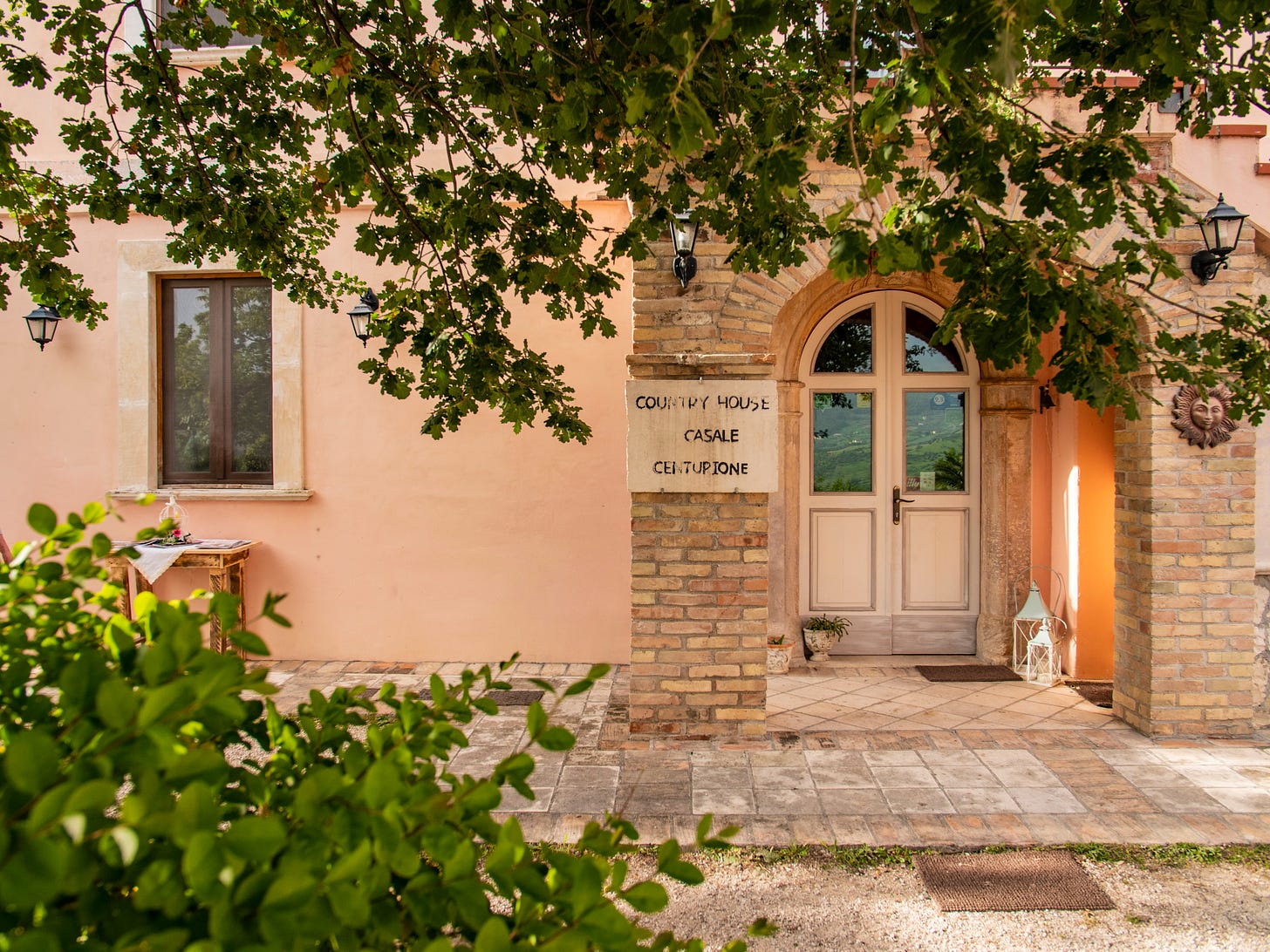
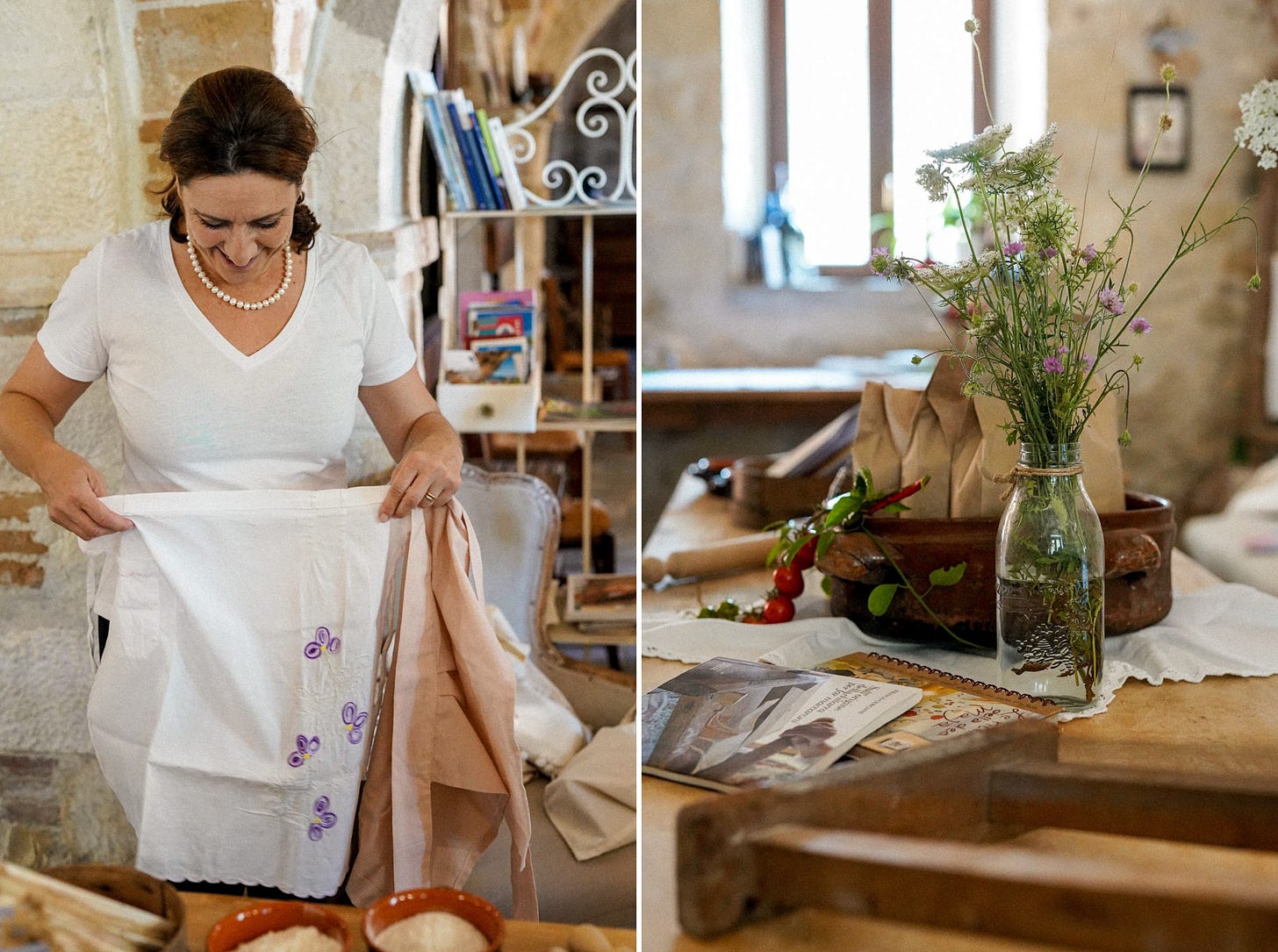
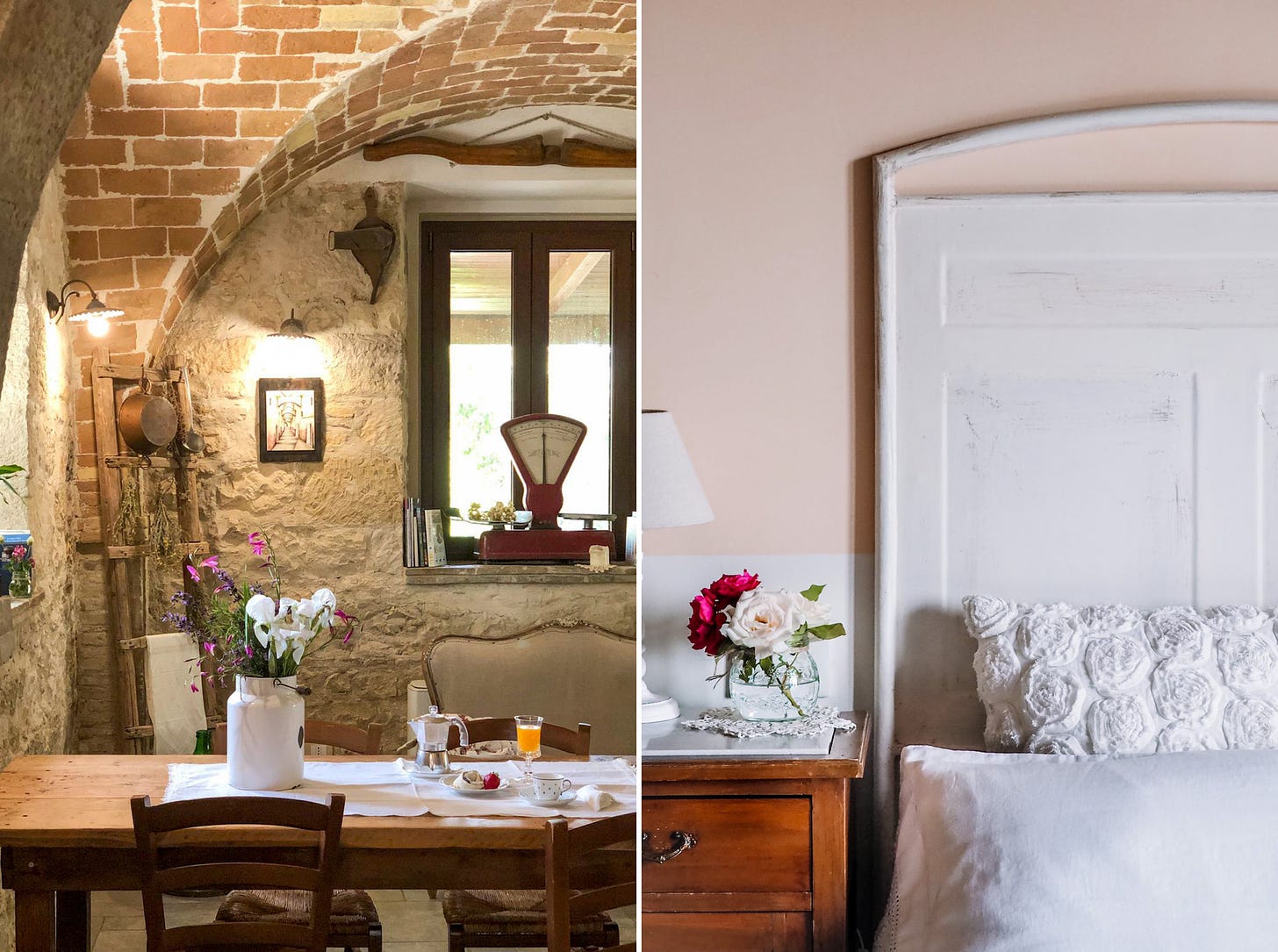
Love this post! How far away is Abruzzo from where you live? Could a person visit both?
How lovely to see the two Giulias here together! Come sono buone le pallotte cace e ove 🥰